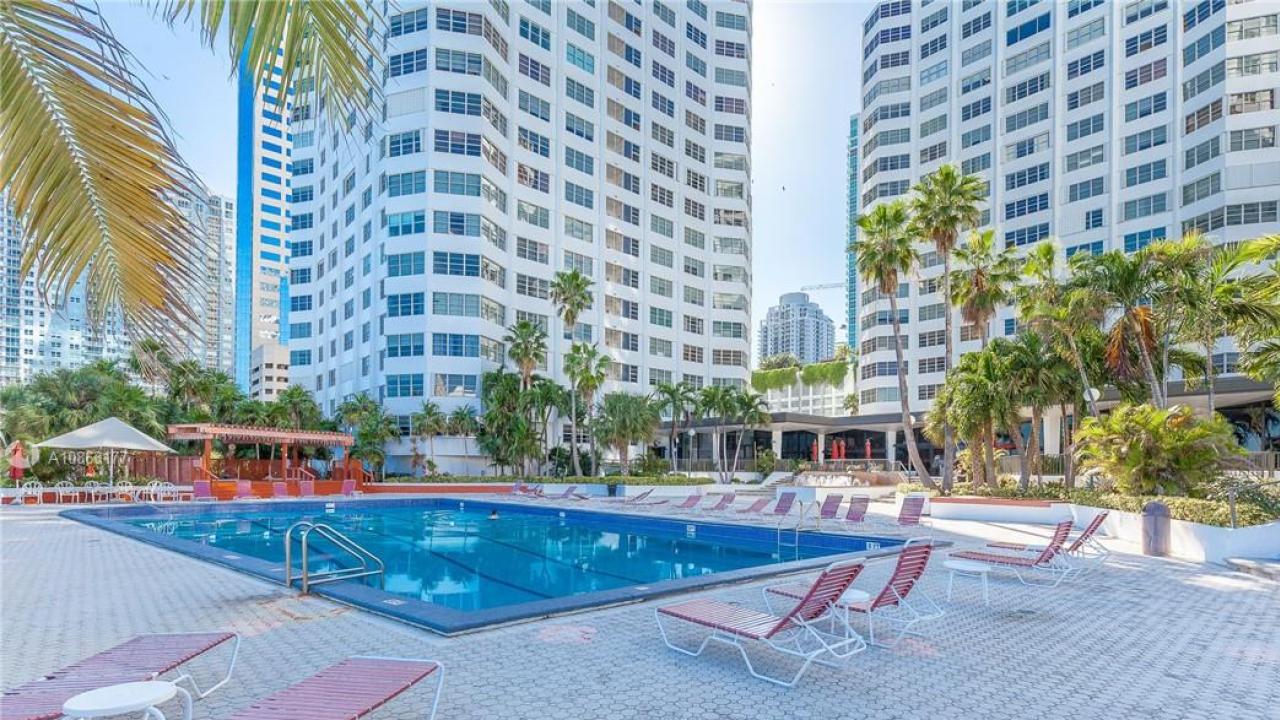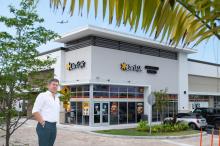
Despite the high level of interest rates in the North American country and some headwinds in the real estate sector in that country, Latin American investors continue to invest in real estate in said market, including options in the commercial area: warehouses, multifamily, retail and offices.
At the beginning of 2024, the financial markets of the United States, Europe, and even Asia were surprised by the crisis of the New York Community Bank (NYCB), a medium-sized regional bank that suffered difficulties and required strong capitalization after recording losses due to the devaluation of their real estate assets. The NYCB crisis generated widespread concern about the banks' exposure to real estate loans, to some extent in the multifamily segment, but mainly in the office segment, significantly affected by “remote work” during and after the COVID-19 pandemic. 19.
However, as the months have passed, the financial markets and agents participating in the real estate industry have come to understand that crises like the NYCB are relatively isolated events, which will not significantly affect the large banks, much less They would have the necessary impact to generate a systemic crisis.
As Darin Melott, leader of Capital Markets Research at CBRE (one of the largest firms in the commercial real estate business in the United States) told AméricaEconomía regarding such concerns, “the loans can be extended and hopefully the market conditions be more stable when they expire again,” adding, “this will be something that develops over a long period of time. "It will not be like a wave that takes away many banks and endangers the banking system." The expert expects that the situation will be defined in the medium term with the consolidation (mergers, acquisitions and bankruptcies) of some of the most exposed regional banks.
On the side of the commercial real estate market itself, after a 19% year-on-year contraction in the amount of investments during the first quarter, Melott is betting on a gradual recovery in the coming months. “We expect a somewhat slow second and third quarters, but we are going to begin to see an improvement in the last quarter. By the end of the year we will probably be in flat growth, but we see the recovery gaining traction in 2025.”
For Melott, it is key to understand that the real estate market is not homogeneous. “The first thing I would say is that do not paint all real estate with the same brush,” he said, emphasizing that it is important to distinguish not only between segments, but within them, always taking into account the differences that are generated by geographic location, even within the same city. From that perspective, the CBRE expert highlighted how even within the downturned office segment, there are areas that are performing well, such as prime ones , in “trophy” type buildings.
Melott also expressed that there are fundamental factors that support the future expansion of other commercial segments in the United States, such as, for example, wineries, whose demand will continue to increase hand in hand with the rise of e-commerce , the strengthening of supply chains, and nearshoring . Regarding the retail segment , the expert explained that, due to a phenomenon of oversupply, this type of space stopped being built in the 2010s, which means that, today, there is an inventory deficit that makes Rental and sale prices are high in some cities. “There was no more supply, but demand for retail is growing as the economy continues to expand,” he explained.
In the multifamily segment, for its part, although Melott admits some “concerns” (in reference to leveraged buyouts with debt at variable interest rates), there are structural factors that restrict supply, while demand is supported by phenomena such as the migration. “If you look at multifamily, the US has a deficit of houses and there is also an issue of ability to pay; Today it is cheaper to rent,” he noted to reinforce his rather optimistic vision about the future of this market segment.
In short, Melott sees opportunities in all areas of the commercial business, including offices in well-located locations.
IMPACT ON LATIN AMERICAN INVESTMENT
Faced with this situation and perspectives, Latin Americans definitely continue to be attracted to the US real estate market. “We see that there is a lot of interest in investing in the United States; There is a lot of appetite,” Ezequiel Chomer, CFO of Dividenz , a Miami-based platform that allows people from the region to invest in representative real estate instruments in this country, told AméricaEconomía.
There are several factors that explain this appetite. According to Chomer, “investors are primarily motivated by portfolio diversification. There are local options that even offer high interest rates, in Colombia, Argentina, etc., but the idea is not only to be in my country, but to access a leading business market, like the United States,” he explained.
The political factor also weighs. “Investment has increased due to the political issue. The political situation in Latin America is becoming more and more important. Countries are moving towards a left-wing trend that makes the money come out faster, or the motivation to get it out comes faster, at least,” Andrés Valdivieso, Executive Director for Latin America at Participant, told AméricaEconomía from Miami. Capital , a fund that offers different real estate investment vehicles. Chomer shares that vision; “Our countries have instability in common, which makes people want to protect a part (of their assets) in the United States,” he said.
The CFO of Dividenz also sees a change in the way of investing by the average Latin American who is interested in real estate in the United States, moving from the traditional purchase of the so-called “ brick and mortar ” (brick and mortar, that is, the asset tangible) in apartments or houses, towards more sophisticated instruments, such as those that offer investment funds that group commercial projects, such as multifamily, warehouse, retail , and office.
“In Latin America we come from the culture of emigration that came to America with nothing and sought to have our own house and have the title, something that I can touch, it is something very cultural. But that doesn't make much practical sense today for many reasons, such as diversification, operating costs, etc. It makes more sense to have a share in a building than to have an apartment in a building,” Chomer argued.
Certainly, the option of investing in a real estate portfolio is attractive for those who do not wish to get involved in the direct management of the property. In addition, it is an opportunity for those who do not wish or cannot invest large amounts. In Dividenz, for example, you can make investments through its app , starting at US$20,000, with terms of three to five years and the possibility, “based on conservative projections,” Chomer said, of obtaining monthly returns (tied to the operating flow of the asset), and one at the end of the investment period (tied to the sale of the asset or its refinancing).
“We are not innovating in the what, but in the how,” Chomer pointed out in relation to the ease of investing from the smartphone, although, yes, he emphasized that there are always commercial advisors who guide the process. The other innovation, added the Dividenz executive, is the business architecture, which prevents the investor from having to make tax payments in the United States, although it is their responsibility to comply with any tax burden in their country of origin.
The Dividenz app , according to Chomer, is especially popular among investors from Argentina, Colombia and Mexico. “They are people between 30 and 70 years old, in some cases professionals, who have the desire to invest in real estate , just as they do in stocks and bonds, and have longer-term investment horizons,” he explained.
THE LATEST: LEND TO FINANCE PROJECTS
For their part, Participant Capital's clients, as explained by Valdivieso, are mainly located in Colombia and Peru, investing average tickets of US$180,000 to US$200,000, although the fund allows investments from US$50,000. The investments have a term of four to five years and a variable return that has historically averaged 12% annually (fluctuating between 10% and 15%).
“The fund invests in a portfolio of different projects under construction. Most of them are projects located in the state of Florida, in residential, multifamily and master plans (land rezoning for rental communities, shopping centers and offices),” Valdivieso explained.
Lately, however, another investment alternative is growing for Latinos: lending money to finance projects. An option offered by funds such as Participant Capital through its project development subsidiary (Royal Palm). “It is practically a bridge loan. We take the investor's money for 18, 24 or 36 months and pay a fixed interest, which can be 12% to 14%,” explained Valdivieso. In this case the minimum investment is US$100,000. The high costs of capital in the United States (where mortgage loans exceed 7% annually and construction loans exceed 10% annually) have encouraged project developers to look for investors to finance them with alternatives such as those offered by Participant, Dividenz and other similar funds. “This demand finds interest among Latin American investors who want an income, instead of variable, with fixed terms and rates,” explained Valdivieso.
Participant focuses on multifamily projects. “Right now we are developing rental communities for the working class in sectors where it is needed. For example, Orlando, where the largest rental community has 200 apartments, and more are needed, and that is why we are making 400,” said Andrés Valdivieso. His fund doesn't just invest in the continental United States. It has recently diversified to projects in places like Puerto Rico, where the government is offering high tax incentives for the development of tourism projects, for example.
RETURN VS. RISK
As in any investment, those who venture into real estate in the United States must do so with due advice and adjusting their profitability expectations with their risk tolerance. As mentioned before, while the direct investment option involves the management of the property, indirect options – that is, through funds – have lower operating costs and possibly offer better returns, but are subject to risks, such as completing the construction of the project (if investing in those that are in said process) or facing a lower sale price of the asset at the end of the investment period (for projects that are already built and operating).
As Chomer explained in this regard, “there is no sector that is risk-free. What you are looking for is to first identify them, and then minimize them. You don't put 100% of your assets in a single product. In this case, it is diversified into various real estate assets,” said the Dividenz CFO.
For Chomer, one of the keys when investing in projects in development is to identify how they are leveraged. In this sense, it is better to stay away from those who have debts at variable rates, and concentrate on those who have a fixed interest rate.
Another key aspect when investing through funds is to look at their business history and backing in terms of assets. In the case of Participant, for example, when it comes to investments to finance projects, the fund offers a privileged position of repayment, in the event of an event of default. That is, if the project failed and the creditors had to access the assets of the fund to recover their credits, the investor would have the second repayment position, after the commercial banks, which gives it a certain privilege over other creditors, such as suppliers and contractors, to mention examples.









